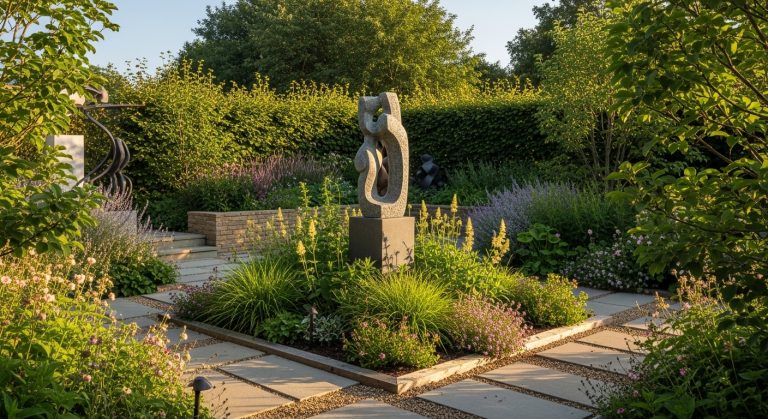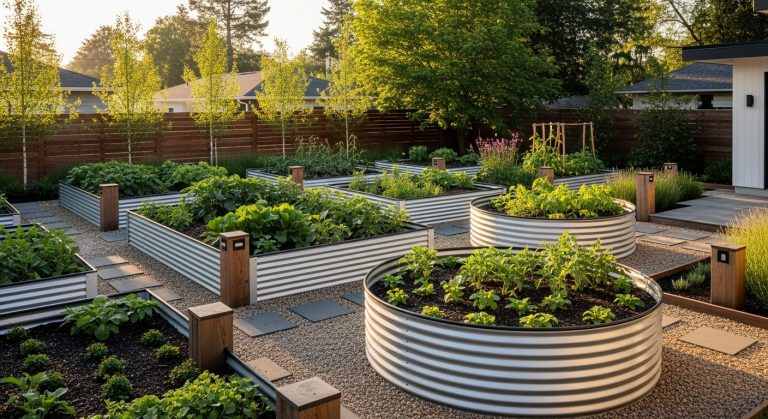Garden Companion Planting: 15 Smart Ways to Boost Growth, Health & Flavor
Ever planted your garden carefully only to see some plants thrive while others struggle, even though you did everything “by the book”? I’ve been there too, standing in my backyard thinking, “Why is the basil flourishing while my tomatoes look sad?” That’s when I fell in love with garden companion planting—the clever art of pairing plants that actually help each other grow. Not only does it boost growth and yield, but it also turns your garden into a more resilient, self-sustaining ecosystem.
Companion planting isn’t just a fad; it’s rooted in centuries of gardening wisdom. When done right, it can naturally repel pests, improve soil health, and even enhance flavors. Plus, it makes your garden look like a miniature, vibrant tapestry of greenery. Today, I’m sharing 15 companion planting ideas that will make your garden healthier, more productive, and visually stunning. Whether you’re a seasoned green thumb or a curious beginner, these tips will change the way you think about planting forever.
1. Tomatoes and Basil
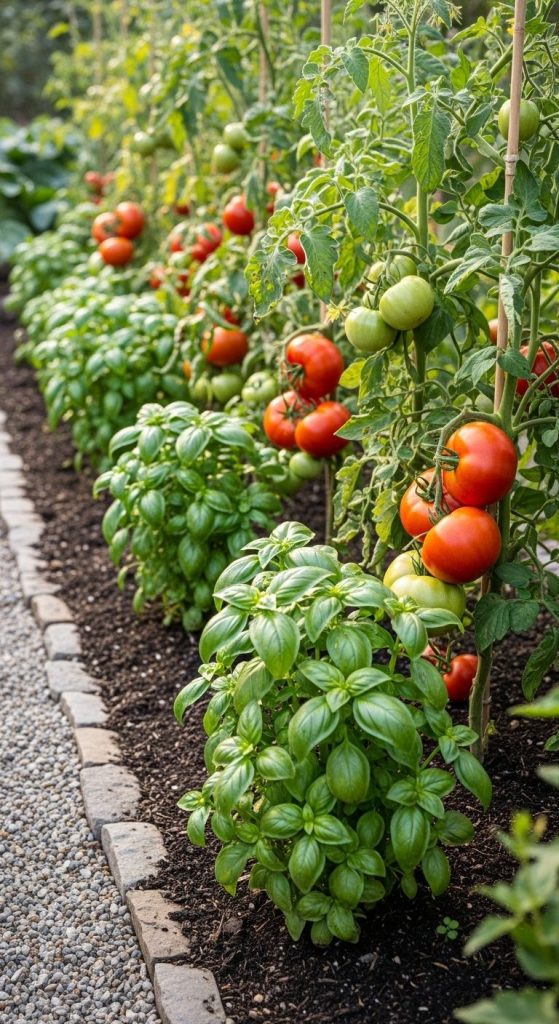
Tomatoes and basil are classic companions. Plant them close together, and you’ll notice something magical happening—not just in growth but in flavor. Basil is believed to repel pests like tomato hornworms while enhancing the taste of the fruit.
Pros:
- Natural pest deterrent for tomatoes.
- Improves tomato flavor through subtle biochemical interactions.
- Basil grows quickly and fills space, reducing weeds.
Cons:
- Basil can overshadow smaller tomato seedlings if planted too close.
- Needs regular watering and sunlight for best results.
Takeaway: Pairing tomatoes with basil isn’t just tradition—it’s a small change that transforms your garden’s productivity and taste.
2. Carrots and Onions
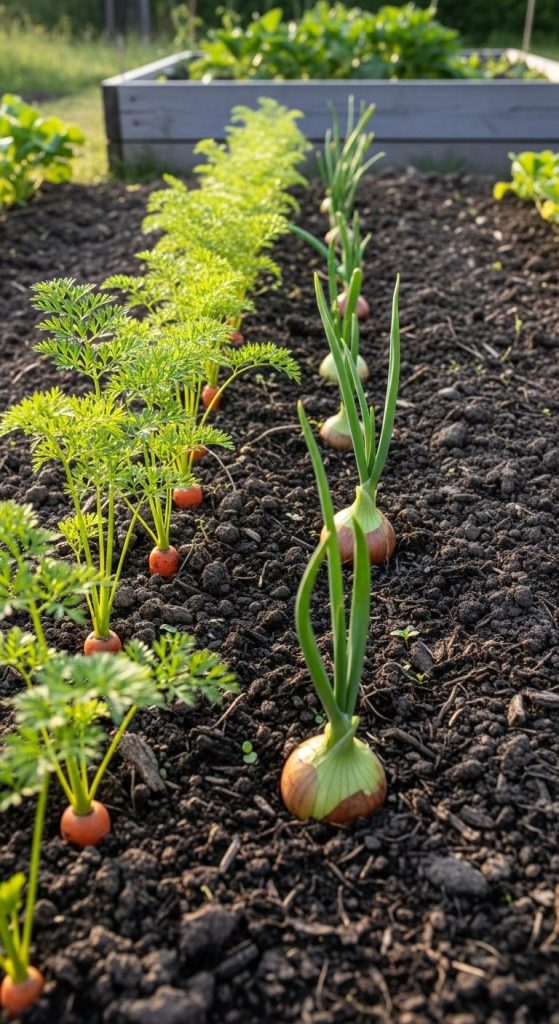
Carrots and onions are like yin and yang in the vegetable world. Onions repel carrot flies, while carrots don’t compete aggressively for nutrients. This pairing keeps pests at bay without any chemicals.
Pros:
- Natural pest control for both crops.
- Maximizes soil use—roots and bulbs occupy different levels.
- Encourages healthy growth through mutual benefits.
Cons:
- Onions may need more sun than carrots, requiring thoughtful placement.
- Harvesting can be tricky if crops are crowded.
Takeaway: Intercropping carrots and onions is smart, low-maintenance, and highly effective.
3. Corn, Beans, and Squash (The Three Sisters)
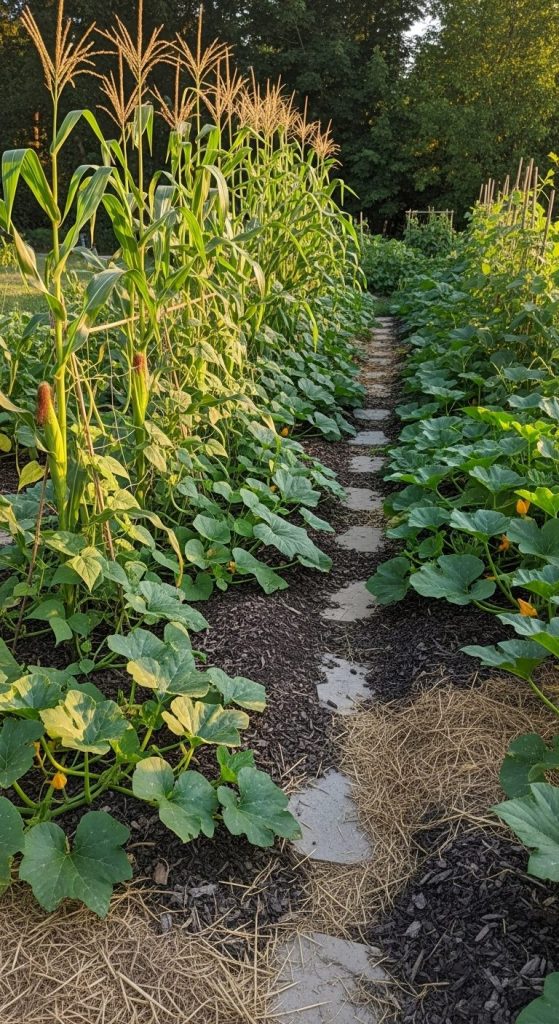
Native American gardeners called them the “Three Sisters” for a reason. Corn provides a natural trellis for beans, beans fix nitrogen into the soil, and squash spreads across the ground, suppressing weeds.
Pros:
- Improves soil fertility naturally.
- Creates a balanced ecosystem with structural diversity.
- Maximizes vertical and horizontal space efficiently.
Cons:
- Needs sufficient spacing and sunlight.
- Complex layout may intimidate beginner gardeners.
Takeaway: The Three Sisters demonstrate the brilliance of multi-layered companion planting for both productivity and visual appeal.
4. Cabbage and Dill
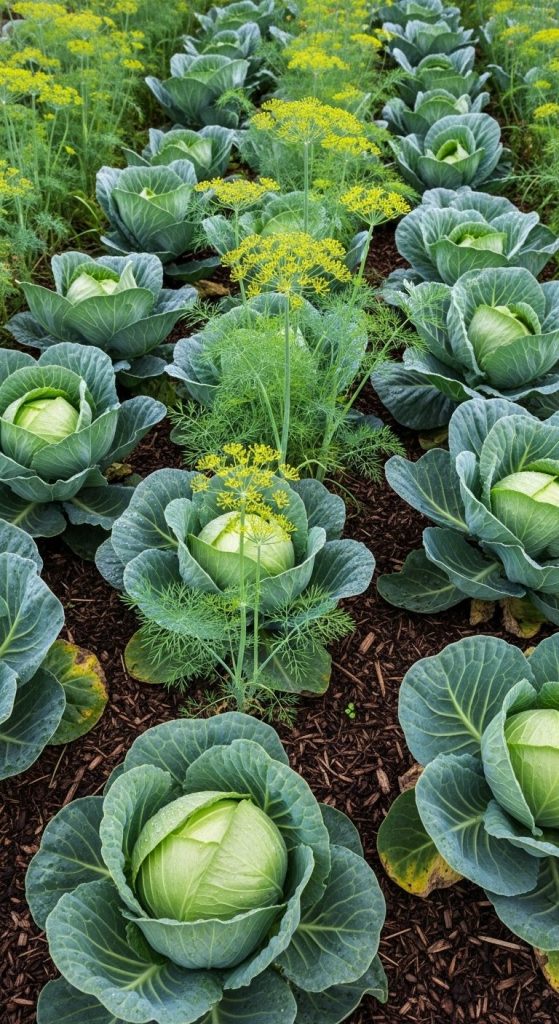
Dill is a favorite companion for cabbage. It attracts beneficial insects like ladybugs and predatory wasps that keep cabbage pests under control.
Pros:
- Reduces risk of aphids and cabbage worms.
- Supports pollinators with fragrant blooms.
- Adds diversity to your planting scheme.
Cons:
- Dill can self-seed aggressively if left unchecked.
- Needs enough space to prevent overcrowding.
Takeaway: Pairing cabbage with dill enhances plant health while adding delicate, feathery foliage that looks beautiful.
5. Peppers and Marigolds
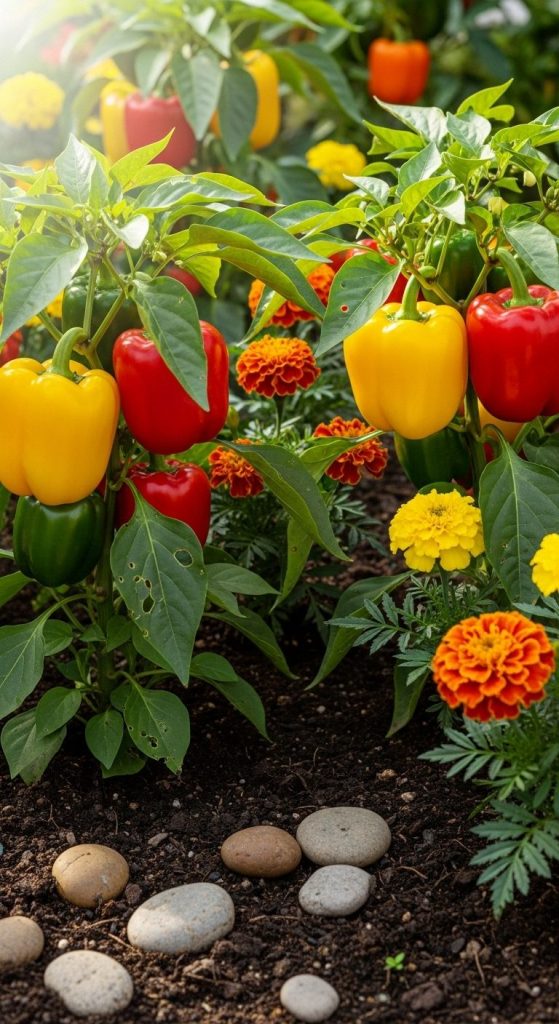
Marigolds aren’t just cheerful; they’re powerful allies. They deter nematodes and attract beneficial insects that protect peppers. Planting them alongside your pepper crop is both practical and visually appealing.
Pros:
- Reduces nematode damage.
- Adds vibrant color and pollinator attraction.
- Easy to grow alongside peppers.
Cons:
- Marigolds may require extra water during hot spells.
- Overcrowding can reduce air circulation around peppers.
Takeaway: Marigolds add life and defense to pepper beds—a tiny flower with big benefits.
6. Spinach and Strawberries
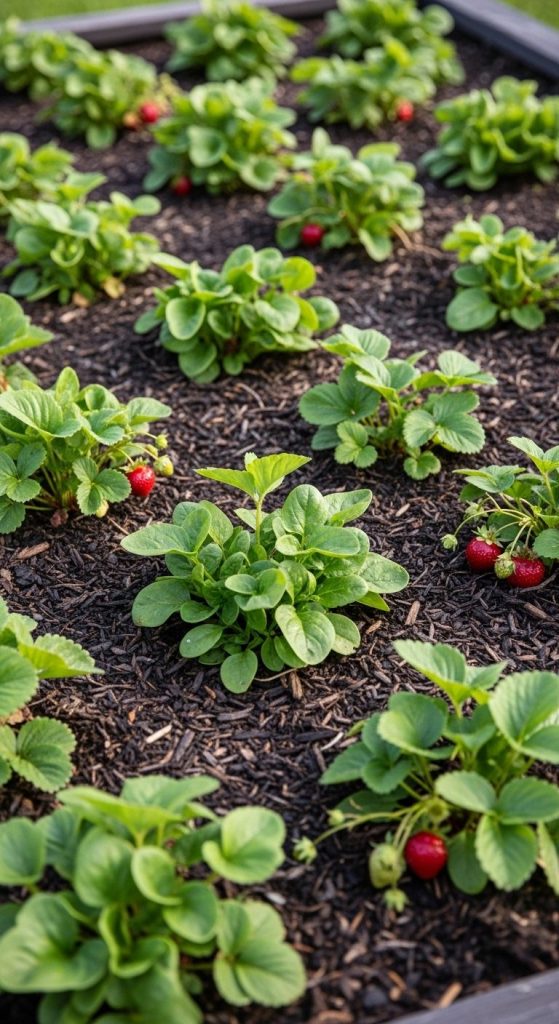
Spinach is a shade-loving plant that pairs perfectly with low-growing strawberries. They occupy different layers, making the most of vertical space.
Pros:
- Maximizes ground coverage in small gardens.
- Helps retain soil moisture and reduce weeds.
- Both plants benefit from shared pollinators.
Cons:
- Spinach may bolt in hot weather.
- Strawberries need well-drained soil to prevent rot.
Takeaway: Planting strawberries with spinach is a smart use of space, beauty, and productivity.
7. Lettuce and Chives
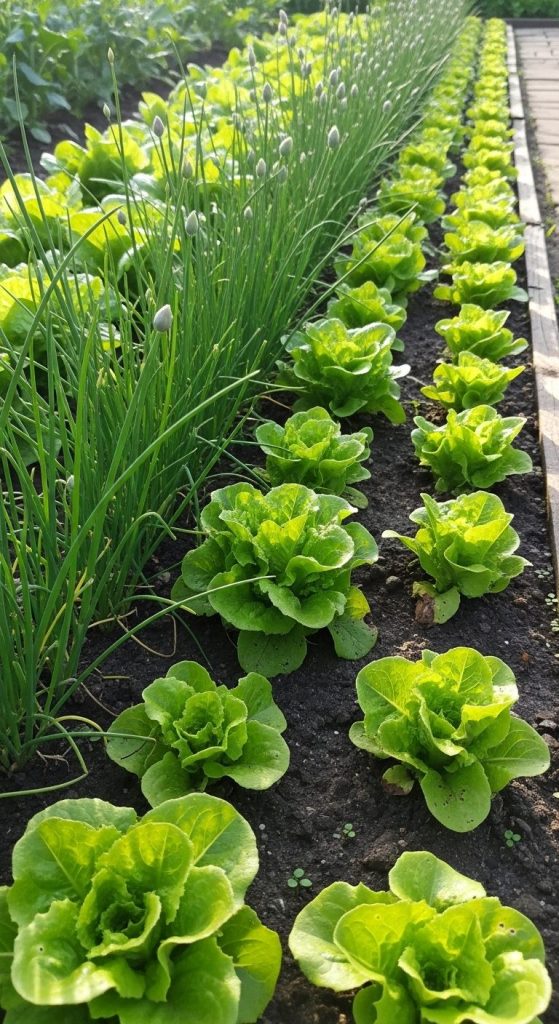
Lettuce is tender and easily damaged by pests. Chives repel aphids and improve the flavor of lettuce leaves. This simple pairing is a no-brainer for home gardens.
Pros:
- Aphid deterrent without chemicals.
- Enhances flavor of lettuce.
- Easy to maintain with minimal interference.
Cons:
- Chives need regular trimming.
- Overcrowding can shade lettuce excessively.
Takeaway: Lettuce and chives prove that small, thoughtful plant pairings yield tangible benefits.
8. Cucumbers and Nasturtiums
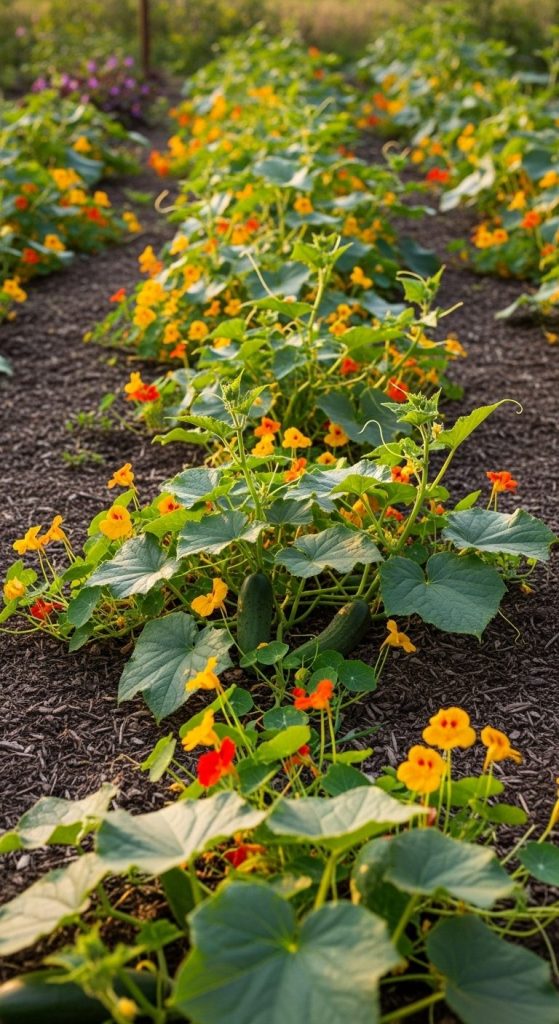
Cucumbers love a flowering companion like nasturtiums. The flowers lure aphids away, protecting your cucumbers naturally. Plus, the vibrant blooms make your garden pop.
Pros:
- Natural pest trap for aphids.
- Adds ornamental value to vegetable beds.
- Encourages pollinator visits.
Cons:
- Nasturtiums can spread quickly and compete for nutrients.
- Needs monitoring to prevent entanglement with cucumber vines.
Takeaway: Combining cucumbers and nasturtiums is like planting beauty and defense in one go.
9. Beans and Radishes
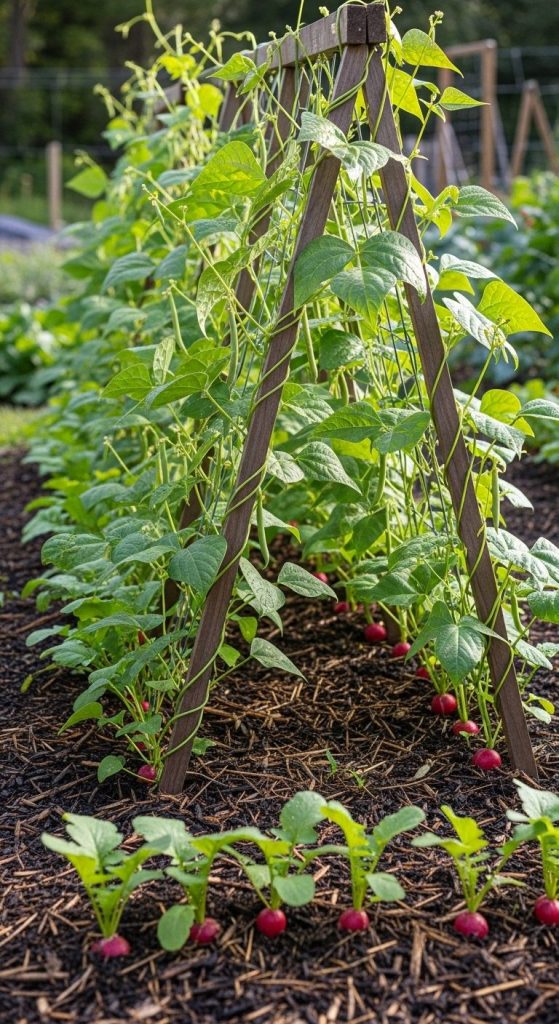
Radishes mature quickly and can be planted with slower-growing beans. They loosen soil and create space while beans climb upward.
Pros:
- Improves soil aeration.
- Provides ground cover to reduce weeds.
- Maximizes vertical and horizontal planting space.
Cons:
- Radishes may need frequent harvesting to avoid bitterness.
- Beans need support structures for climbing.
Takeaway: Beans and radishes are a playful, productive duo in every veggie bed.
10. Garlic and Roses
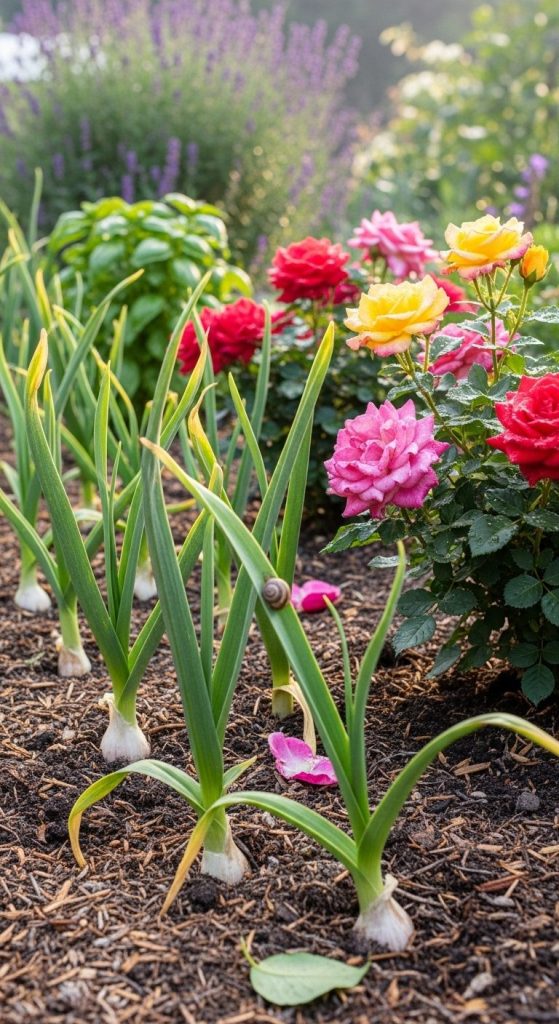
Yes, garlic and roses make a great team. Garlic repels aphids and fungal diseases, keeping roses healthy while adding fragrance and aesthetic appeal.
Pros:
- Natural pest and disease control.
- Enhances rose health and bloom quality.
- Dual-purpose: edible garlic and ornamental roses.
Cons:
- Garlic needs full sun, so placement must suit both plants.
- Bulbs take space from the rose’s root system.
Takeaway: Garlic plus roses is functional elegance—protection and beauty together.
11. Carrots and Lettuce
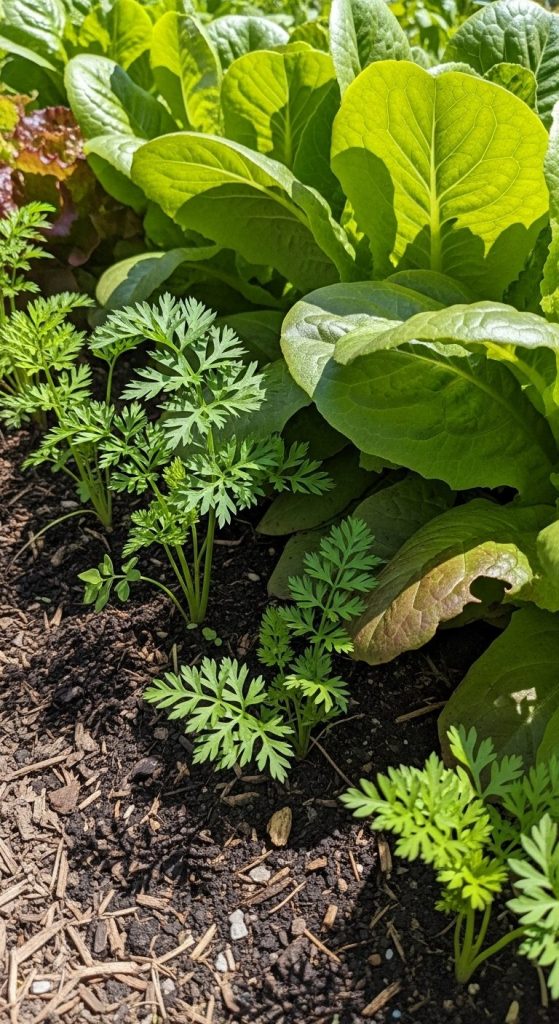
Carrots and lettuce are like bedfellows. Lettuce shades the carrot roots and keeps the soil cool, while carrots don’t overshadow the lettuce.
Pros:
- Maximizes layering and space efficiency.
- Lettuce provides micro-shade for carrot roots.
- Easy, low-maintenance pairing.
Cons:
- Lettuce may bolt in hot weather, reducing shade.
- Requires careful thinning to prevent overcrowding.
Takeaway: Carrots and lettuce show how companion planting can optimize both growth and space.
12. Squash and Corn
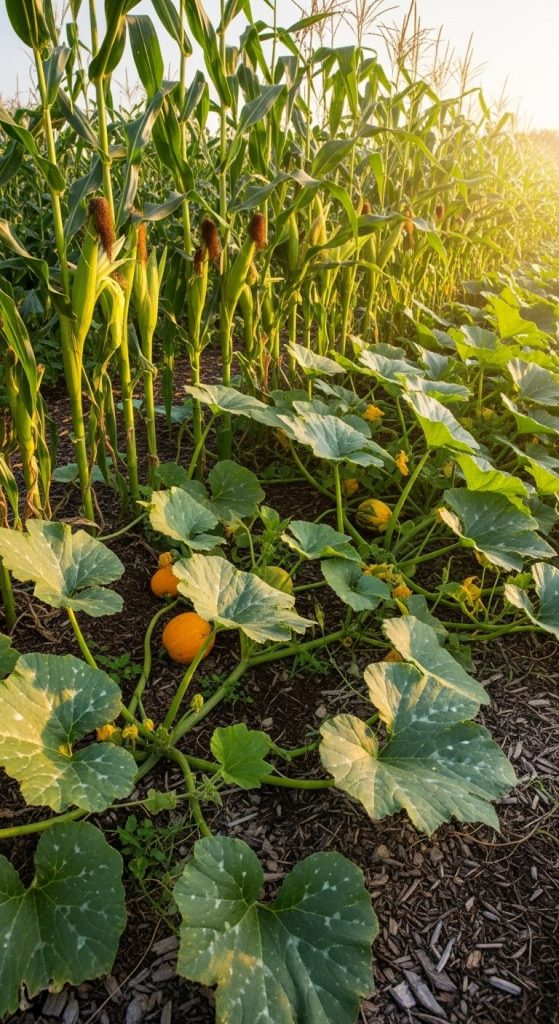
Corn provides natural support for climbing squash varieties. Meanwhile, squash spreads across the ground, preventing weeds and retaining soil moisture.
Pros:
- Structural support for climbing plants.
- Suppresses weeds with ground coverage.
- Creates a layered, dynamic garden aesthetic.
Cons:
- Needs significant space for sprawling squash.
- Requires monitoring to prevent corn shading squash excessively.
Takeaway: Squash and corn are a classic combo that balances height, spread, and productivity.
13. Broccoli and Celery
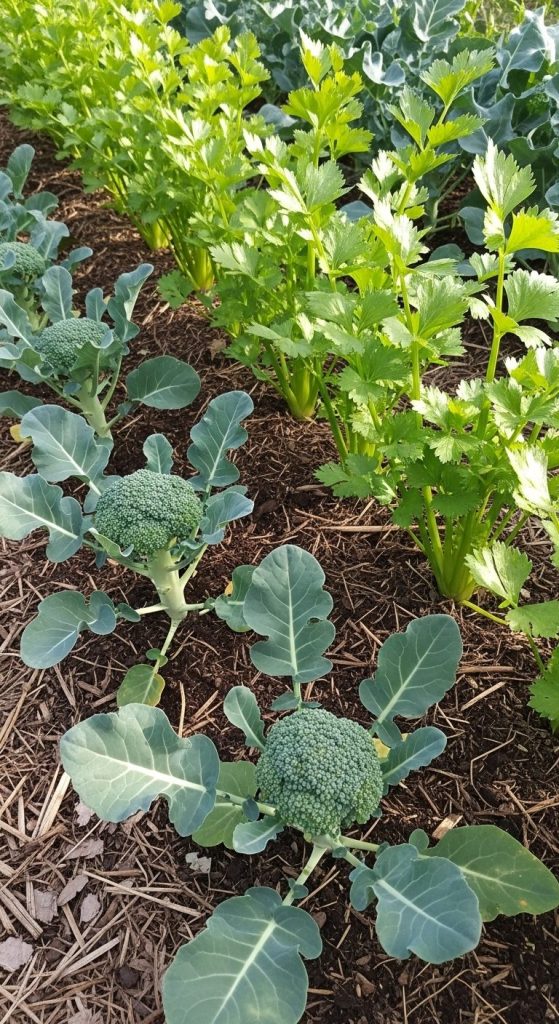
Celery attracts beneficial insects that deter pests from broccoli. Plus, it fills in empty spaces while broccoli matures.
Pros:
- Reduces pest damage naturally.
- Efficient use of garden space.
- Supports biodiversity in the bed.
Cons:
- Celery needs consistently moist soil.
- Close planting may reduce airflow around broccoli.
Takeaway: Broccoli and celery demonstrate that plant pairing isn’t just about space—it’s about shared defenses.
14. Peas and Radishes
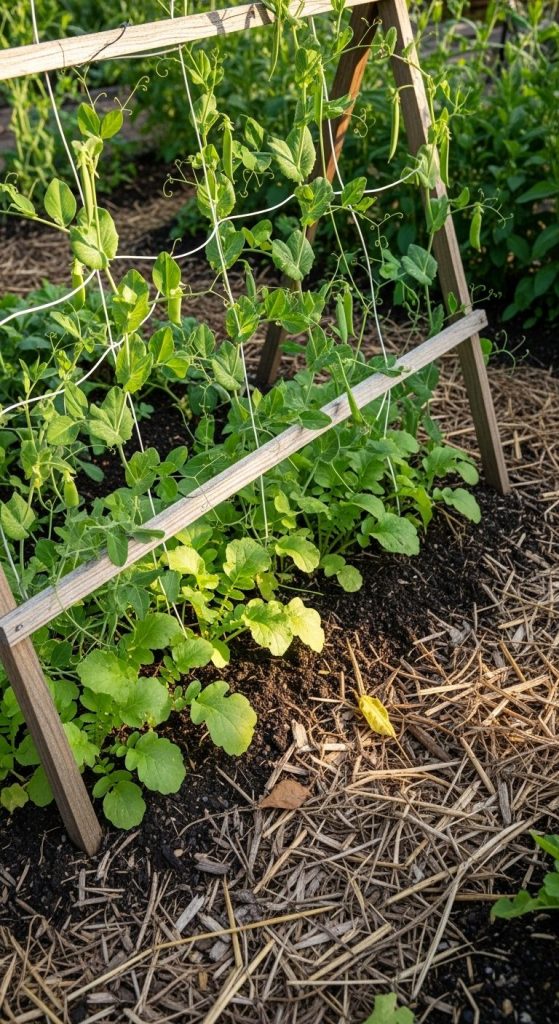
Peas fix nitrogen in the soil, benefiting nearby radishes, which grow quickly and loosen the soil. A win-win for fast-growing and nutrient-demanding crops.
Pros:
- Improves soil fertility for radishes.
- Radishes break up soil for pea roots.
- Short growth cycles allow multiple harvests.
Cons:
- Radishes may compete for water.
- Peas need vertical support.
Takeaway: Peas and radishes combine speed and nutrition for efficient planting cycles.
15. Spinach and Strawflowers
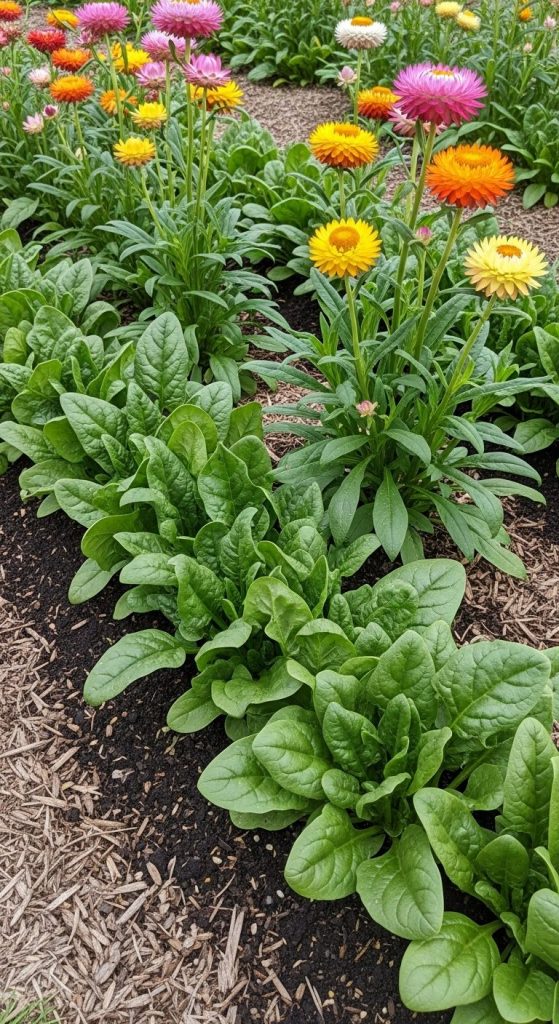
Spinach enjoys cool soil and partial shade, while strawflowers bring height, color, and pollinator attraction. Together, they enhance growth and garden aesthetics.
Pros:
- Provides visual diversity and layered growth.
- Attracts pollinators naturally.
- Spinach benefits from micro-shade under taller flowers.
Cons:
- Strawflowers need well-drained soil to thrive.
- Seasonal compatibility must be considered.
Takeaway: Pairing greens with flowering plants like strawflowers makes gardens productive, beautiful, and alive with pollinators.
Conclusion
Companion planting isn’t just a gardening technique—it’s a lifestyle choice for healthier, more resilient, and visually rich gardens. From tomatoes with basil to spinach under strawflowers, these 15 pairings show that the right plant partners can boost growth, repel pests, improve flavor, and make the most of limited space. By observing, experimenting, and learning from nature, your garden transforms into an ecosystem that thrives on collaboration rather than competition.
Plant thoughtfully, mix colors, layers, and scents, and watch as your garden not only flourishes but delights all your senses. Remember, a garden isn’t just what you grow—it’s how you grow together, one companion at a time.

Ashley Ellison is a skilled writer and avid bowler. Her passion for storytelling and dedication to the sport have led her to participate in various national bowling leagues. With a unique combination of talents, Ashley approaches every challenge with creativity and a relentless drive to succeed.





